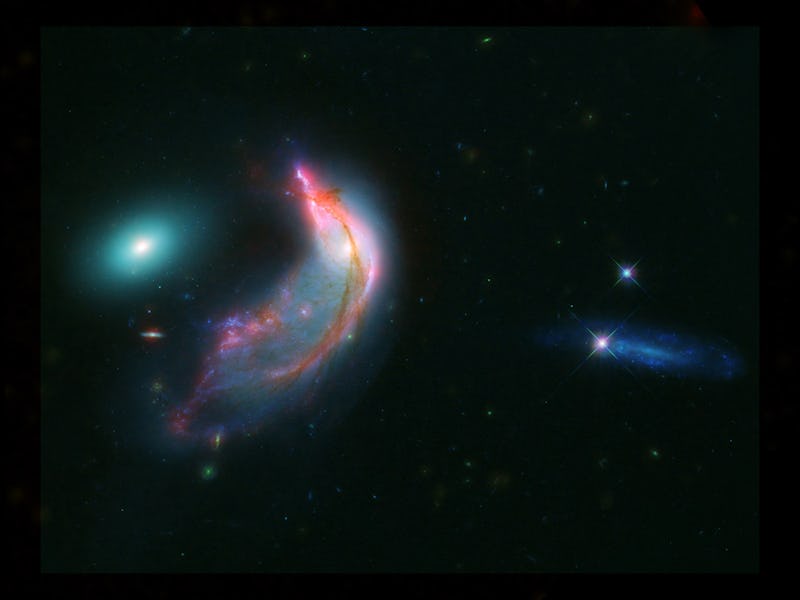These Merging Galaxies Look Like a "Penguin Guarding an Egg"
The perfect symbolism for the birth of a new galaxy.

Much like gazing at clouds and seeing formations that resemble things down here on Earth, peering into deep space can reveal some uncannily familiar sites.
The image below depicts two galaxies in the process of merging — known as Arp 142 — which coincidentally looks like an Emperor Penguin huddling over its egg. The “penguin” portion of this galactic duo is NGC 2336, while the “egg” is NGC 2937. Both of these astronomical objects are 23 million light-years away from Earth. They were captured using data from NASA’s Spitzer and Hubble space telescopes.
Join our private Dope Space Pics group on Facebook for more strange wonder.
When galaxies collide, the star systems that make them up rarely ever crash into each other, simply because the distance between them is so vast. However, the immense gravitational forces created by these celestial bodies passing by each other can completely warp the galaxies’ overall structures.
Distant interacting galaxies, known collectively as Arp 142, bears an uncanny resemblance to a penguin guarding an egg. Published by NASA on February 1.
NGC 2336 was probably a run-of-the-mill spiral galaxy at one point, full of gas and newborn stars. But as it neared NGC 2937 the dust and space debris inside of it were scattered. In fact, it almost seems like NGC 2336 is wrapping around the “egg” galaxy as it is distorted by this cosmic impact.
NGC 2937, on the other hand, is a compact grouping of stars. Unlike the “penguin” galaxy, it has long since used up the gas and dust that birthed its stars. This suggests that this astronomical object is much older than its counterpart.
While it might be hard to imagine because of how different both of these galaxies appear, they will one day fully merge to form a single object. This image portrays a significant step in how most large galaxies are created, including our home galaxy — The Milky Way.
It’s almost too fitting that both of these objects have come together to resemble a process of creating life on Earth as they’re creating something new in the cosmos.